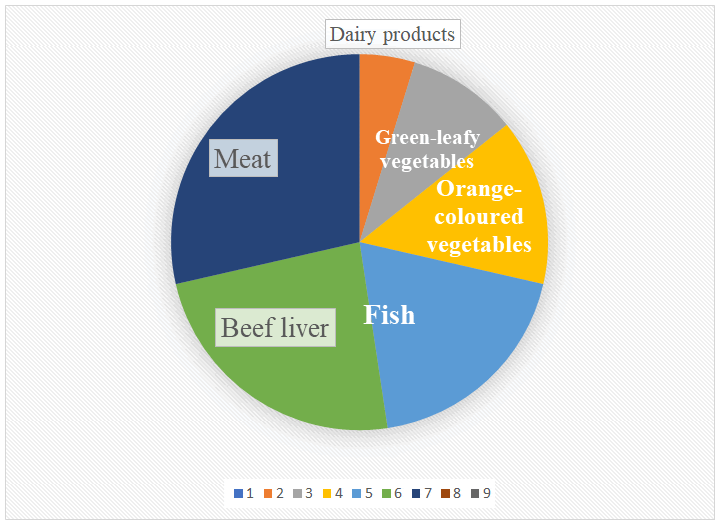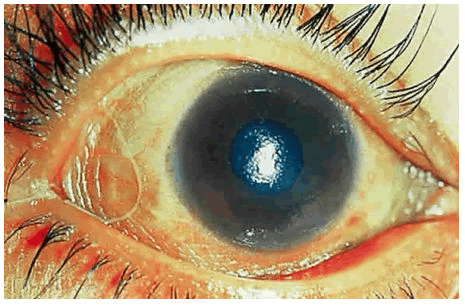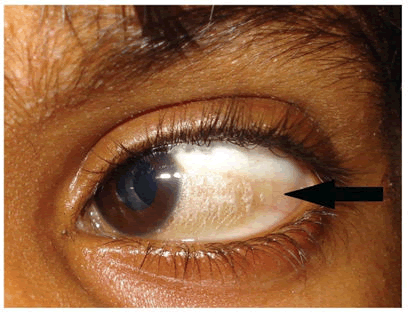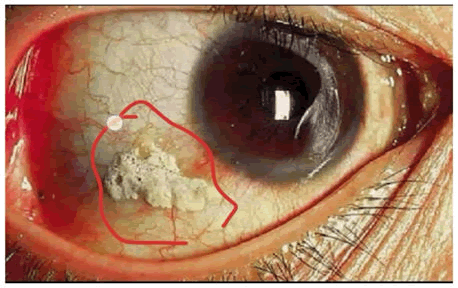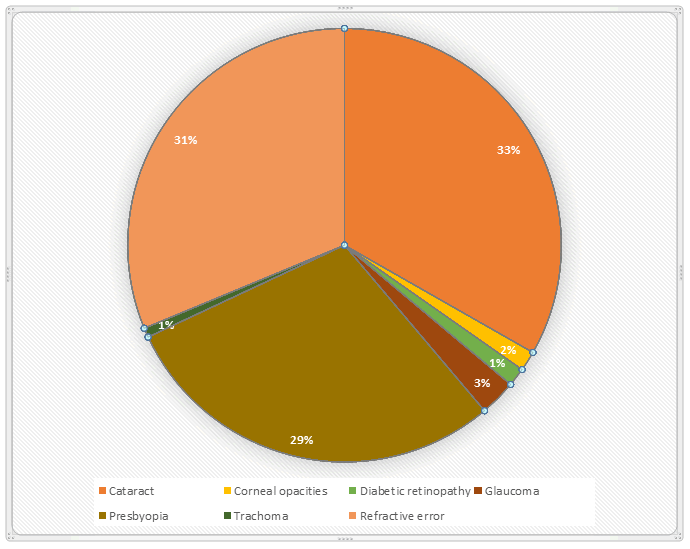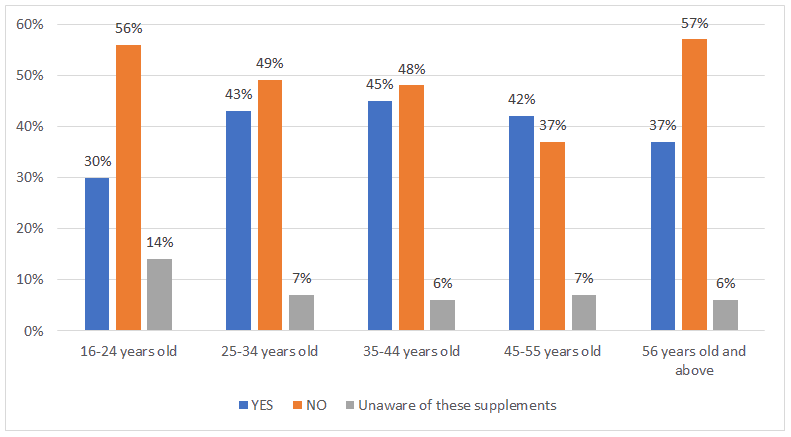Review Article - Journal of Clinical Ophthalmology (2023) Volume 7, Issue 3
Association of ocular conditions with vitamin A deficiency: an update
Alpana Kumari*
Department of Optometry, Chandigarh University, Gharuan, Mohali Punjab, Chandigarh, India
- Corresponding Author:
- Alpana Kumari
Department of Optometry,
Chandigarh University,
Chandigarh,
India
E-mail: koundalalpana660@gmail.com
Received: 01-Dec-2022, Manuscript No. AACOVS-22-82030; Editor assigned: 05-Dec-2022, AACOVS-22-82030 (PQ); Reviewed: 19-Dec-2022, QC No. AACOVS-22-82030; Revised: 10-Feb-2023, Manuscript No. AACOVS-22-82030 (R); Published: 17-Feb-2023, DOI:10.35841/aacovs.7.2.624.
Citation: Kumari A. Association of ocular conditions with vitamin A deficiency: an update. J Clin Ophthalmol. 2023;7(2):1-7.
Abstract
Background: The pervasiveness of Vitamin A Deficiency (VAD) among youngsters is filling in India as of now. Vitamin A is a fat solvent micronutrient which along with its normal subsidiaries and manufactured analogs comprises the gathering of retinoids. They are engaged with a wide scope of physiological cycles like early stage advancement, vision, invulnerability and cell separation and multiplication. VAD is considered as a general medical problem in non-industrial nations. Almost 45 half preschool youngsters in Asian districts were impacted by extreme VAD. Absence of vitamin A can dry out tear pipes and eyes xerophthalmia keeps on being the main source of reversible visual impairment in the creating scene.
Results: Our study offers a unique insight that how occurrence of ocular conditions is taking place progressively and how they can be controlled. It has been estimated that the overall occurrence of VAD in India is 17.54% and this normal incidence can be diminished by supplying adequate VAS. Especially to the children aged 4-5 years, because VAS also helps in preventing visual revelations in rural areas. It has been observed VAS given to paediatric will not motive any big side effects whilst the endorsed age precise nutrition A dose is administered but will be helpful in preventing the visual revelations like xerophthalmia, night blindness and so on.
Conclusion: The purpose of the research is that VAS is very necessary in preventing association of ocular conditions with VAD because vitamin A not only is beneficial for a healthy functioning of ocular surface but it also supports a healthy immune system, because the unhealthy immune device attacks and inflames the blood vessels within the returned of the eye, on the retina, that can have an effect on sight.
Keywords
VAD, VAS, Xerophthalmia, Keratomalacia, Keratoconjunctivitis, Child mortality
Introduction
Vitamin A deficiency is a prime issue that is particularly discovered in children and adult females. It is a kind of dietary concern that is most in all likelihood located in rural areas [1]. Lack of vitamin A outcomes from a nutritional admission of vitamin A that is deficient to fulfil sensual requirements. It’s normal in emerging nations, yet seldom seen in created nations. Lack of vitamin A will be a general medical condition in the greater part, all things considered, particularly those in Africa and South-East Asia. Its presence as a popular clinical issue is evaluated by estimating the pervasiveness of lack in a populace, addressed with the aid of explicit biochemical and medical marks of status. The principal basic reason for VAD as a general medical condition is an eating routine that is persistently inadequate in vitamin A which could result bring down body stores and overlook to address physiologic issues [2]. Two arrangements of markers are normally used to evaluate the extent of VAD in populace studies and incorporate visual and serum or plasma retinol appraisal.
Literature Review
Vitamin A is a sebaceous compound that has a number of narcotic effects to resource vision and anatomical differentiation [3]. The occurrence of VAD is seldom discovered wealthy first world international locations. However, it is able to affect people after inflammatory bowel disorder and obesity surgical procedure. VAD can cause ophthalmology, dermatology and immunology disorders. This track describes the complications of VAD and the management of affected patients [4]. VAD mainly affects babies in poor areas around the world. Inadequate absorption and ingestion leads to a scarcity of crucial biological strategies. Unique origin of diet A encompass green vegetables, orange sweet potato greens, dairy sources, offal and meat products as shown in Figure 1 [5]. Most are saves in hepatic stellate cells the corresponding amount is also stored in adipose tissue and pancreas [6]. The humanoid diet contains two sources of vitamin A: The prescribed diet A (retinol and retinyl esters) and the provitamin A carotenoid. Predetermined vitamin A is located in animal derived foods such as dairy sources, meat products and internal organs. Provitamin A carotenoids are plant pigments that the frame converts to vitamin A in the intestines. Vitamin A sources are arranged in a pie chart according to MCG intake [7].
Vitamin A is essential for breast metabolism during lactation [8]. In Bangladesh, VAD has been recognized as a public fitness problem for over a decade. But most vitamin A research focuses on toddlers and infants. Many new-borns in Bangladesh continue to be breastfed until the age of one and some babies continue to be partially breastfed until the age of two or older. Because breast milk is a wealthy source of vitamin A for new-borns, babies born with low vitamin A storage meet their needs by primarily depending on the concentration of vitamin A in the breast milk [9]. Children who are not breastfed or wean too early are at increased risk of VAD. Vitamin A levels in mother’s milk are related to the mother’s nutrition status and have a direct effect at the health and survival of the baby. Therefore, proper vitamin A status is required during breastfeeding and is important for maintaining proper vitamin A. Breast milk degrees and consequently vitamin A status in infants and toddlers.
Vitamin A plays a pivotal function in imaginative and prescient. A good way to look at the total spectrum of mild, the attention desires to ensure certain pigments for the retina to function properly. VAD diminish the production of those pigments and causes night blindness. The sight additionally desires vitamin A to keep other parts of the eye, along with the cornea. Without sufficient vitamin A, the eyes cannot catalyse considerable water to maintain proper hydration [10]. VAD is the leading purpose of preventable blindness in infants worldwide [11]. An estimated 350,000 to 500,000 babies are blinded by VAD each year due to accelerated morbidity and mortality from infectious sickness in babies. Half of these babies die within a year of losing their eyesight. Old fashioned VAD is most common in babies over the age of 3-6 years. Acute VAD most commonly occurs in infants up to the age of 14 to prevent blindness and infant mortality due to VAD. Therefore, the intervention should be targeted at preschool babies.
VAD is considered as a public health problem in developing international locations almost 45%-50% preschool children in Asian areas have been stricken by intense VAD. Table 1 below reveals the prevalence of VAD among different countries [12].
| S. No. | Countries | Affected population in (%) | Age of children in months |
|---|---|---|---|
| 1 | India | 17.54% | 0-59 M |
| 2 | South Asia | 44% | 6-59 M |
| 3 | East Asia | 42% | 0-59 M |
| 4 | Carribean | 21% | 12-48 M |
| 5 | Sub-saharan Africa | 48% | 6-59 M |
| 6 | Colombia | 24.30% | 12-16 M |
| 7 | Mexico | 21.30% | 18-36 M |
| 8 | Brazil | 17.40% | 0-59 M |
Table 1. Prevalence of VAD among different countries (Based on data collected by WHO).
VAD promotes a vitamin A rich diet, fortifies foods with vitamin A and can be reduced by taking high doses of VAS. To reduce VAD, it is essential to expand the intake of vitamin A rich foods amongst prone people, including fortified foods. While efforts have been made to improve nutrition, VAS has been proven to be effective in reducing the effects of VAD, mainly in infant’s elderly 6 months to 5 years. VAS proved to be constructive in decreasing the death rate [13]. A consistent evaluates using African studies showed a 24% discount in mortality under the age of 5 and diarrhoea and measles. It was shown that VAS was reduced in 6-59 months old infants with one associated incidence [14]. Women are very sensitive to VAD during pregnancy, but no VAS during pregnancy has been reported. High doses of vitamin A from dietary supplements can strain a growing baby. Instead, pregnant women are less likely to harm the developing foetus and are encouraged to meet their growing needs by consuming foods rich in sufficient vitamins [15].
The most important benefits of vitamin A are given below:
• Dry eye syndrome can be treated with lubricating eye drops containing vitamin A.
• Keratoconjunctivitis, also known as eye inflammation, can be treated with vitamin A: Factor for loss of vision due to macular degeneration. There is a possibility [16,17].
• People suffering from retinitis pigmentosa, the combination of vitamin A and lutein can maintain vision [18].
Methodology
This study was carried out in order to check the affiliation of ocular situations with VAD in which we focussed on some medical research, statistical records, journals, case studies and some research articles on VAD, its prevalence among preschool children, how its occurrence can be prevented, disorders taking place VAS to get rid of these ocular troubles.
Inclusion criteria
In this study the total of 45 applicable research articles and 5 relevant journals were taken into consideration from the year 2005-2022. From which it’s been evaluated that children elderly 6 months-59 months in rural areas are at greater chance of VAD.
Exclusion criteria
In this study at about 9 research articles were excluded due to fact that they were not meeting the requirements of this study. As in these excluded articles the approach of evaluation had been inappropriate from the point of comparison because of their unprofessional results.
Some optical display of VAD and their prevention
Xerophthalmia: Lack of vitamin A can dry out tear ducts and eyes. As an end result xerophthalmia is a reforming eye disease resulting from VAD. It additionally refers to a sequence of eye symptoms caused by VAD. Xerophthalmia adversely affects the eye internally by reducing photosensitivity of the retina and externally by destroying the corneal and conjunctival epithelium. Xerophthalmia is still the leading cause of reversible blindness inside the developing world. It is able to occur in human beings of every age, but is extra not unusual in adolescents, preteens and pregnant women [19]. It generally occurs in poor people who can’t afford meat, milk, eggs and fruits. Among uneducated or isolated people who are not accustomed to eating green and yellow leafy vegetables and among those who do not understand the relationship between the food they eat and their ability to see. Unfortunately, xerophthalmia is a severity of VAD, with increased susceptibility to malnutrition and mucosal infections causing significant morbidity and mortality.
Xerophthalmia is rare inside the United States, United Kingdom and different advanced nations. It is still seen in developing countries where people may have restricted access to animal foods [20]. Xerophthalmia is probably the most effective disease that has reached the epidemic rate and is a major concern for public health workers. It’s been estimated that about 45% of the arena’s children with xerophthalmia come from South and Southeast Asia [21]. Several research have shown a high occurrence of xerophthalmia in youngsters who additionally suffer from anaemia. This may be related to a lack of dietary intake of nutrients.
Symptoms encompass dry cornea, hypersensitivity reaction to light, dry and wrinkled outer layers of the eyes or conjunctival, hazy eyes, flickering of the eyes, reddishness of the eyes, sand feeling in the eyes, mild irritation and soreness. Consists of early eyes, night blindness, bitot’s spots, want to blink continuously (flashing usually renews the lacrimal membrane). In addition to very dry eyes, eye irritation, corneal surface wear, corneal ulcers in the later stages, the cornea becomes more elastic as the opacity increases. The figure below shows a condition of xerophthalmia (Figure 2 and Table 2) [22].
| Classification | Name | Signs |
|---|---|---|
| XN | Night blindness | Secondary |
| X1A | Conjunctival xerosis | Primary |
| X1B | Bitot’s spot | Secondary |
| X2 | Corneal xerosis | Primary |
| X3A | Corneal ulceration 1 | Primary |
| X3B | Corneal ulceration 2 | Primary |
| XS | Corneal scar | Secondary |
| XF | Xerophthalmic fundus | Secondary |
Table 2. According to WHO the xerophthalmia is classified into following stages.
According to the studies two of the most common symptoms of xerophthalmia are,
Night blindness: Night blindness, also referred to as nyctalopia is lack of ability to peer properly at night or in darkish places which includes restaurants and cinemas. It is often related to the lack of ability to quickly regulate from a bright environment to dark surroundings. It’s not a disorder in itself; however it’s far a symptom of an underlying eye hassle, normally a retinal hassle [23]. People with myopia usually have troubles with night time vision, however it’s not always because to retinal disorder, but due to optical issues. Nyctalopia has both obtained and congenital bureaucracy. Obtained types of night blindness consist of VAD and paraneoplastic syndromes (black tumor related retinopathy and cancer related retinopathy). Congenital bureaucracy include both the desk bound form of night blindness (severity remains relatively constant throughout life) and the progressive form (severity stays fairly steady at some stage in lifestyles) [24]. The quiescent form may be due to a gene mutation inside the rod photoreceptor or rod bipolar cell. Innovative paperwork consists of retinitis pigmentosa and choroideremia [25]. The diagram underneath reveals the night blindness condition (Figure 3).
Bitot’s spots: Bitot's spots was first described in children debilitated with the aid of the French doctor Pierre Bitot in 1863, are an important signal for the analysis of VAD. Bitot’s spots are considered as dry triangular patches of the tired conjunctiva, typically with a layer of foam on the surface and typically placed on the temporal place of the cornea (Figure 4). The typical foamy look is because of the gas produced via these bacteria. Histologically, Bitot’s spots show keratinization, abnormal maturation, inflammatory infiltration and accumulation of gram superb rods. Bitot’s spots are the superficial accumulation of keratin within the conjunctiva of the human eye. They can be oval, triangular or irregularly shaped. These spots can be reduced with replacement therapy.
In ancient Egypt, this was treated with the liver of animals that store vitamin A. The main underlying causes Bitot’s spot are: Short bowel syndrome, inadequate food supply, alcoholism, dysphagia chronic diarrhoea and absorption disorder.
Xerophthalmia is a situation wherein the film in the eye is decrease and the eye is unable to shed tears. This happens when there is a problem with the lacrimal duct and the main function of the lacrimal duct, tear production is impaired. Xerophthalmia is also known as dry eye syndrome or conjunctivitis. Tears are very important to the health of our eyes. Because tears actually keep them smooth. Without eye film, you wouldn’t be protected from external particles or deposits. Therefore, a healthy tear film also guarantees healthy eyes and therefore good eyesight. Patients diagnosed with xerophthalmia suffer from vision problems and other annoying symptoms that require specialized medical treatment.
Prevention:
• Most often, it occurs between poor urban dwellers and rural farmers in poorly serviced areas and keratomalacia develops without the children seeing a doctor. Therefore, to prevent this, centre examiners, caregivers, midwives and other healthcare specialists want to study in maternal and infant health.
• Pregnant women are advised to take a concentrated supplement rich in vitamin A at prophylactic doses. This helps build a retinol store in the fetal liver and should continue during lactation. Mothers should be suggested to encompass darkish green leafy vegetables or yellow and orange end result in their baby food. They are locally available, inexpensive and are known to be an excellent source of beta carotene.
• For blindness caused by keratomalacia, a single high dose prophylaxis of retinol in an oily solution is recommended. It is given as a capsule for oral ingestion. The dose is safe and side effects are rare. All preventive programs should be evaluated through regular field surveys of the prevalence of xerophthalmia.
• Eye malnutrition is just one of several causes of blindness. There are more than 10 million visually impaired human beings in the world of vision and blindness.
Xerophthalmia can be treated with the help of VAS. The supplements are either prescribed to be consumed orally or administered via injections. Furthermore, the examiner prescribes antibiotics to prevent any infections from developing in the optical structures. If cornea is already damaged then the examiner advises the patient to also keep the area covered and protected, to prevent it from pathogens, pollutants and determental toxins in the environment. In order to maintain healthy vision VAS is fundamental to consume in adequate amount as it is instant treatment of Xerophthalmia.
Relationship of visual circumstances because of absence of VAD is most normal in rustic regions: Optical conditions are responsible for partial or general blindness. Blindness and visual impairment by its sheer importance bureaucracy and sizable hassle, not most effective in human struggling, however also in terms of affordable loss and social burden. In many areas of the industry, especially in rural areas, blindness poses a serious public health issue due to its financial and social repercussions. WHO information suggests that globally as a minimum 2.2 billion people have a close to or distance vision impairment and most significantly 80% of all visible impairment may be avoided, dealt with or cured. However due to loss of sources in rural regions i.e. loss of preferred system for fundamental eye examination in number one health centres, socioeconomic repute, geographical distance and problems associated with accessibility, lack of integration and linkage between diverse levels of care can affect visible impairment. For you to save such situations creating recognition amongst rural people of eye illnesses is obligatory. Uncorrected refractive error and cataract include 75% of the reasons of visible impairment, which can be all preventable cataract is the main reason of blindness in most low to moderate profits countries while it’s been changed by macular degeneration and uncorrected refractive blunders in developed nations.
In addition, humans include those with slight or severe distance vision impairment or blindness because of unaddressed refractive errors (88.4 million), cataract (94 million), glaucoma (7.7 million), corneal opacities (4.2 million), diabetic retinopathy (3.9 million) and trachoma (2 million) as nicely close to imaginative and prescient impairment brought on by presbyopia (82.6 million) if those situations are left untreated they are able to emerge as common causes of low vision in rural regions (Figure 5).
Insufficient intake of vitamin A is the primary cause of VAD. Nowadays VAS is the most important concern in both rural and urban areas. Because of insufficient supply of VAS occurrence of many childhood diseases is extra common among infants. VAD in under 5 infants is causing a mortality risk of up to 30%-40%. Also, the association of ocular conditions is taking place progressively among young infants. So as a result adequate supply of VAS is found to be very effective among young infants because it helps in
• Encourages and strengthens the immune system of developing children.
• Supports the growth of various membranes and tissues in the body and keeps them healthy.
• Sharp with the aid of playing an important role in the growth of the retina promotes sight and strong eyesight (known as vitamin A retinol).
• Rapidly repairs internal and external processes of the body and actively supports tissue regeneration and wound healing.
• Affects bone, tooth and various tissue growths to ensure proper physical and structural development.
In order to prevent the association of visual revelation some VAS applications targeted especially at children elderly 6 months-59 months are implemented in lots of areas where in 37% of infants had received VAS. The leftover 63% have not been received due to lack of knowledge and socioeconomic status. It has been estimated that VAS was not only consumed by children but also by all age groups. Out of which majority were unaware of these dietary supplements (Figure 6).
However, in mild of current research paper considerable research has been observed on the adequate supply of VAS and it has been observed that adequate supply of VAS is found to be obligatory to prevent the association of ocular conditions.
Our study offers a unique insight that how occurrence of ocular conditions is taking place progressively and how they can be controlled. It has been estimated that the overall occurrence of VAD in India is 17.54% and this normal incidence can be diminished by supplying adequate VAS. Especially to the children aged 4-5 years, because VAS also helps in preventing visual revelations in rural areas. It has been observed VAS given to infants will not motive any big side effects whilst the endorsed age precise nutrition A dose is administered but will be helpful in preventing the visual revelations like xerophthalmia, night blindness and so on.
Data sources: Articles about the relationship between relationships of ocular conditions with VAD were collected from the databases including the WHO global database on VAD, search engine of Googlescholar, MEDLINE/PubMed, UNICEF universal databases above VAD and Googlescholar.
Discussion
The present study is undertaken in the light of available articles to determine the association of ocular conditions with VAD. In which high levels of VAD are seen especially among helpless populations where young children are severely affected. VAD remains an important cause of ocular morbidity. VAD also influences expansion, the differentiation of epithelial tissues and immune competence, the most dramatic impact, however, is in the eye which includes xerophthalmia i.e. is a preferred time period applied to all ocular conditions from night blindness via complete corneal destruction (keratomalacia) because to VAD as demonstrated by Kaberi B, et al.
In this study, it has been estimated that the overall incidence of VAD in India is 17.54% due to which there’s a rise in several visual revelations. As a result, VAS is a powerful intervention related to a reduction of rising in ocular conditions. Hossain MM, et al. did a similar study on rural urban determinants of VAD, in which it is addressed that urban people are more likely to receive VAS than rural people. In our study, we found a root cause that why rural people are not able to receive VAS. The reason behind it is that rural people could also get an adequate amount of VAS due to a lack of resources; they are at high risk of VAD. So VAS is indeed necessary for both rural and urban people. Therefore, getting an adequate amount of vitamin A from your diet will prevent the symptoms of deficiency xerophthalmia, night blindness and increased susceptibility to infections. In the line with sector World Health Organisation (WHO), about one third of the world’s preschool kids are vitamin A deficient and maximum of them live in rural areas.
Sampurna Kundu, et al. in their study of prevalence and determinants of VAD among youngsters in India observed that VAD among the rural humans in India continues to be a primary nutritional trouble of public fitness importance. in our study, we discovered that this major nutritional hassle of public health importance can be cured by way of growing cognizance of eye health amongst rural people, some VAS applications, by human resources and from community programs because visual impairment have a big impact on a person’s fine of existence. It also affects their education and employment opportunities. Sight saver will set up vision centres, make the necessary human resource investments, train clinical, nonclinical employees and hold eye camps to deliver high quality healthcare to everyone in each block in order to enhance rural areas.
This study also highlighted the importance of primary education of mothers who were likely to give their infants VAS compared to mothers without education. For women who are at a certain stage of breastfeeding, in addition to serum retinol levels. The amount of retinol in breast milk can serve as a marker for both breastfeeding mothers and new-borns nutritional condition. Consequently, it has been observed that VAS is obligatory in preventing the association of ocular conditions with VAD. Because it not only helps in maintaining healthy vision but also ensures the normal functioning of your organs as well as establishing normal growth and development of babies in the womb. On the other hand, this study also states that xerophthalmia was public fitness importance for school infants of this society, in long term, sustainable manipulate should be finished by often consisting excessive doses of vitamin A each 4 months to 6 months and fortification of foods and nutrients education must be dealt to prevent association of ocular condition with VAD.
Conclusion
The purpose of the research is that VAS is very necessary in preventing association of ocular conditions with VAD because vitamin A not only is beneficial for a healthy functioning of ocular surface but it also supports a healthy immune system, because the unhealthy immune system basically attacks on the blood vessels of retina, which can affect vision. In fact in countries where most cancers and infections like measles are not unusual, correcting VAD in youngsters and women of reproductive age has been proven to decrease the threat of morbidity and mortality from those sicknesses.
Acknowledgement
Authors are thankful to the student Ravdeep Kaur for her contribution in collection of data and all the relevant articles.
The authors also thankful to UIAHS department and Chandigarh university for providing the atmosphere to complete this write up.
References
- Sahile Z, Yilma D, Tezera R, et al. Prevalence of vitamin A deficiency among preschool children in Ethiopia: A systematic review and meta-analysis. Biomed Res Int. 2020.
[Crossref] [Google Scholar] [PubMed]
- Wiseman EM, Bar-El Dadon S, Reifen R. The vicious cycle of vitamin a deficiency: A review. Crit Rev Food Sci Nutr. 2017;57(17):3703-14.
[Crossref] [Google Scholar] [PubMed]
- D'Ambrosio DN, Clugston RD, Blaner WS. Vitamin A metabolism: An update. Nutrients. 2011;3(1):63-103.
[Crossref] [Google Scholar] [PubMed]
- Hombali AS, Solon JA, Venkatesh BT, et al. Fortification of staple foods with vitamin A for vitamin A deficiency. Cochrane Database Syst Rev. 2019;5(5):CD010068.
[Crossref] [Google Scholar] [PubMed]
- Saeed A, Dullaart RPF, Schreuder TCMA, et al. Disturbed vitamin A metabolism in Non-Alcoholic Fatty Liver Disease (NAFLD). Nutrients. 2017;10(1):29.
[Crossref] [Google Scholar] [PubMed]
- Cabezuelo, M Teresa, Barber T et al. Role of Vitamin A in Mammary Gland Development and Lactation. Nutrients. 2019;12(1):80.
[Crossref] [Google Scholar] [PubMed]
- Ahmed F, Azim A, Akhtaruzzaman M. Vitamin A deficiency in poor, urban, lactating women in Bangladesh: Factors influencing vitamin A status. Public Health Nutr. 2003;6(5):447-52.
[Crossref] [Google Scholar] [PubMed]
- Smith J, Steinemann TL. Vitamin A deficiency and the eye. Int Ophthalmol Clin. 2000;40(4):83-91.
[Crossref] [Google Scholar] [PubMed]
- Nair H, Arya G, Vidnapathiranad J, et al. Improving neonatal health in South-East Asia. Public Health. 2012;126(3):223-26.
[Crossref] [Google Scholar] [PubMed]
- Mayo-Wilson E, Imdad A, Herzer K, et al. Vitamin A supplements for preventing mortality, illness and blindness in children aged under 5: Systematic review and meta-analysis. BMJ. 2011;343(1):5094.
[Crossref] [Google Scholar] [PubMed]
- Imad A, Mayo-Wilson E, Herzer K, et al. Vitamin A supplementation for preventing morbidity and mortality in children from six months to five years of age. Cochrane Database Syst Rev. 2017;3(3):CD008524.
[Crossref] [Google Scholar] [PubMed]
- Wirth, James P et al. Vitamin A supplementation programs and country level evidence of vitamin A deficiency. Nutrients. 2017;9(3):190.
[Crossref] [Google Scholar] [PubMed]
- Azuma M, Yabuta C, Fraunfelder FW, et al. Dry eye in LASIK patients. BMC Res Notes. 2014;7(1):420.
[Crossref] [Google Scholar] [PubMed]
- Agrawal VK, Agrawal P. Prevalence and determinants of xerophthalmia in rural children of Uttarpradesh, India. Nepal J Ophthalmol. 2013;5(2):226-9.
[Crossref] [Google Scholar] [PubMed]
- Chiu M, Dillon A, Watson S. Vitamin A deficiency and xerophthalmia in children of a developed country. J Paediatr Child Health. 2016;52(7):699-703.
[Crossref] [Google Scholar] [PubMed]
- Akhtar S, Ahmed A, Randhawa MA, et al. Prevalence of vitamin A deficiency in South Asia: Causes, outcomes and possible remedies. J Health Popul Nutr. 2013;31(4):413-23.
[Crossref] [Google Scholar] [PubMed]
- Sherwin JC, Reacher MH, Dean WH, et al. Epidemiology of vitamin A deficiency and xerophthalmia in at risk populations. Trans R Soc Trop Med Hyg. 2012;106(4):205-14.
[Crossref] [Google Scholar] [PubMed]
- Sharma A, Aggarwal S, Sharma V. Bitot's spots: Look at the gut. Int J Prev Med. 2014;5(8):1058-9.
[Google Scholar] [PubMed]
- Ferrari G, Vigano M. Images in clinical medicine. Bitot's spot in vitamin A deficiency. N Engl J Med. 2013;368(22):e29.
[Crossref] [Google Scholar] [PubMed]
- Uchino M, Uchino Y, Dogru M, et al. Dry eye disease and work productivity loss in visual display users: The Osaka study. Am J Ophthalmol. 2014;157(2):294-300.
[Crossref] [Google Scholar] [PubMed]
- Grubbs Jr JR, Tolleson-Rinehart S, Huynh K, et al. A review of quality of life measures in dry eye questionnaires. Cornea. 2014;33(2):215-8.
[Crossref] [Google Scholar] [PubMed]
- Molina-Leyva I, Molina-Leyva A, Bueno-Cavanillas A. Efficacy of nutritional supplementation with omega-3 and omega-6 fatty acids in dry eye syndrome: A systematic review of randomized clinical trials. Acta Ophthalmol. 2017;95(8):677-85.
[Crossref] [Google Scholar] [PubMed]
- Palmer AC, West KP Jr, Dalmiya N, et al. The use and interpretation of serum retinol distributions in evaluating the public health impact of vitamin A programmes. Public Health Nutr. 2012;15:1201-15.
[Crossref] [Google Scholar] [PubMed]
- Sherwin JC, Reacher MH, Dean WH, et al. Epidemiology of vitamin A deficiency and xerophthalmia in at-risk populations. Trans R Soc Trop Med Hyg. 2012;106:205-14.
[Crossref] [Google Scholar] [PubMed]
- Bhutta ZA, Baker SK. Premature abandonment of global vitamin A supplementation programmes is not prudent. Int J Epidemiol. 2015;44(1):297-9.
[Crossref] [Google Scholar] [PubMed]
